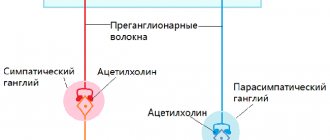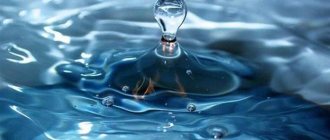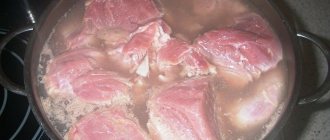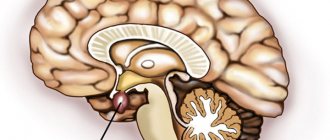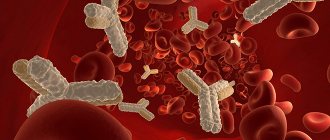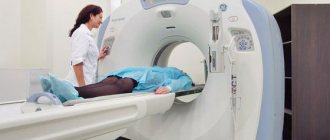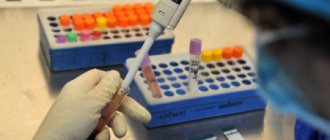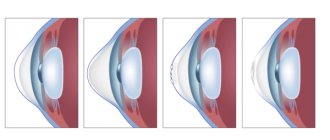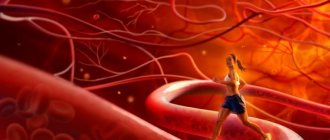A completely healthy baby is the dream of any parent. But, unfortunately, almost no one can completely avoid diseases. And we are not even talking about serious pathologies, but about ordinary acute respiratory viral infections, which are very common in the autumn-winter period.
It is good when an adult patient can talk in detail about his feelings, which makes it possible to establish the correct diagnosis with a greater degree of probability. However, what to do when a very young child is sick? In such a situation, it is quite difficult to determine the symptoms.
In this case, diagnostic methods come to the rescue to determine the nature of the disease, as well as the state of health in general. Urinalysis is one of the simplest ways to determine a pathological process in the body. Even if the child just has a stomach ache, it is better to play it safe and check the baby for serious health problems.
Why take a urine test for children?
Urine is a biological fluid secreted by the kidneys. Water makes up ninety-two to ninety-nine percent of the total composition of urine. It is along with it that decay products, toxins, hormones, and other substances are removed from the body. This is what makes urine analysis so important. Indeed, depending on what impurities are contained in a given biological fluid, one can judge the patient’s health status.
First of all, this diagnostic method allows you to obtain information about the state of the urinary system and the presence of inflammatory processes in the body. This is especially important when diagnosing complex diseases in children, such as pneumonia in newborns. The composition of urine contains: urea, ketone bodies, glucose, chlorides, phosphates, sulfates, protein, amino acids and other components.
The study examines both physical and chemical characteristics. There are reference values, deviations from which indicate certain metabolic disorders, as well as pathological processes in organ systems.
The role of undergoing diagnostic methods in establishing the correct diagnosis cannot be overestimated. The fact is that a bad urine test in a child can immediately direct the doctor in the right direction and find the cause of the ailment. The baby is not yet able to explain his feelings in detail, and therefore he has to rely on the mother’s words, as well as the research results obtained.
Features of the analysis
The presented method of laboratory evaluation of biological material is characterized by its study at the cellular level. To do this, specialists use a microscope and examine the morphology of the sample under multiple magnification.
If you ask a doctor a question about a cytological examination of urine, what it is, he will say that this method can identify some malignant neoplasms or oncological diseases. It is also worth noting that the study helps in identifying infectious and inflammatory processes.
A urine test for atypical cells is prescribed if cancer of the prostate, bladder, urethra, kidneys and ureters is suspected. With correct interpretation of the results, it is possible to diagnose oncology at a very early stage of development, which allows for timely provision of adequate therapy.
How often should it be taken?
There is no clear opinion regarding how often it is necessary to submit urine for testing. According to the recommendations of the World Health Organization, a general urine test in children under one year of age is expected every month, six months, and also a year. In the future, preventive diagnostics must be carried out before visiting a child care facility.
According to the opinion of many pediatricians, it is advisable to conduct a general diagnosis of health status before each vaccination, but in practice this point is quite difficult to implement. Therefore, pediatricians often make do with an in-person examination of a small patient before vaccination, as well as monitoring body temperature.
In addition, it is necessary to undergo urine and blood tests during the acute course of the disease, as well as during its treatment, in order to monitor how the body responds to therapy.
There are several types of urine tests:
Rules for taking a urine test
Most parents are interested in the question of how much urine is needed to test a child. The answer to this will vary depending on the purpose of the study, as well as the type of diagnostic method.
Each type of analysis requires certain preparation and adherence to rules, thanks to which the result will be the most reliable.
General diagnosis of urine
There are two rules that must be followed before any type of urine test. On the eve of collecting biological fluid in a container, it is strongly recommended to exclude vegetables from the diet that can affect the color of urine. Thus, carrots and beets were banned for consumption. In addition, immediately before collection, you need to perform thorough hygiene of the external genitalia. Of course, in the case of infants, this can be quite problematic, because the sound of water can trigger the process of urination.
For general analysis, it is necessary to collect morning urine in a special container. To do this, it is better to release the first portion of urine into a pot (or toilet), a second or two is enough. After this, place the container under the stream and collect the required amount. Seventy to one hundred milliliters is quite enough. In the future, carefully screw the lid on the container and transport it to the hospital.
It is more advisable to use special containers for collecting urine, which can be easily purchased at any pharmacy. Their volume is sufficient for any type of analysis, and the neck is wide enough to collect biomaterial. In addition, the tube is sterile, which will allow you to obtain a reliable analysis.
A general urine test in children plays an important role in determining the state of health, and the norm in this matter depends on many factors, including the age of the baby.
Did you know? For infants who relieve themselves in a diaper, there are special urinals that can be glued to the baby’s genitals.
Nechiporenko test
A characteristic feature is the collection of an average portion of morning urine. Thus, for the first second or two the baby urinates in the pot, then the container is substituted. If, after collecting the required portion, the baby still wants to finish the process, then the test tube is simply removed.
Due to the fact that collecting tests from newborns is quite difficult, the logical question arises of how much urine is needed to test a baby. For Nechiporenko’s test, only twenty-five milliliters is enough.
Urinalysis according to Nechiporenko in children is prescribed quite often, therefore it is necessary to know what the norm for the content of formed elements exists.
One milliliter should contain:
Daily urine analysis
As with any clinical study, hygiene procedures must be carried out before collection begins.
During morning urination, collection does not begin, but the time is noted. Subsequently, all biological fluid is collected in a special container for twenty-four hours.
It is advisable to use a special plastic container for collecting daily urine. It is quite easy to use and safe. The biomaterial must be stored in a tightly screwed container on the bottom shelf of the refrigerator.
After 24 hours, the contents are shaken and the required portion is poured into a small container. At the same time, it is necessary to note on the container how much fluid was excreted by the kidneys per day.
Urine analysis for glucose content
The collection of biomaterial is carried out in stages. Three portions of urine should be collected per day. In this case, collection is carried out by the hour.
The essence of the method is that all the fluid secreted by the kidneys during this time period is collected in a container. After time has passed, the contents are shaken and a small portion is poured into a sterile container. The rest is poured down the toilet. The collection starts all over again. There should be three servings per day.
At the same time, the presence of acetone in the child’s urine is checked, because increased levels of glucose and ketone bodies may indicate the presence of diabetes.
Urine for bacteriological examination
Collection must be done exclusively in a sterile container. Urine is initially collected before the start of antibacterial treatment. In the future, you need to wait three days after the end of therapy, and only then take a second test.
For this study, an average portion of urine is collected, about five milliliters. It should be delivered to the laboratory no later than two hours later.
Deviations from the norm and their meaning
Color Changes:
- Dark yellow color (hyperchromuria) – concentrated urine. Physiological hyperchromuria is observed in the summer and in general with increased sweating, while drinking a small amount of liquid. It is also possible for the urine to become dark colored when eating carrots. Pathological hyperchromuria occurs with dehydration (diarrhea, fever, vomiting) and starvation (including lack of breast milk), with liver and heart disease.
- Very pale, colorless urine (hypochromuria) – observed due to heavy drinking and consumption of foods with a diuretic effect. Pathological hypochromuria occurs in diabetes mellitus and diabetes insipidus, nephrosclerosis and some other kidney diseases.
- Orange color - when eating foods rich in beta-carotene (carrots, persimmons, apricots and other brightly colored orange and yellow-orange fruits and vegetables); while taking riboflavin, multivitamins and vitamin C.
- Pink and red color of urine most often indicates the presence of blood in the urine (cystitis, glomerulonephritis, urolithiasis). In addition, red urine occurs with severe toxicosis, hereditary porphyrinuria, and taking certain medications (sulfazole, red streptocide, amidopyrine).
- The brown color is due to the presence of bilirubin and bile pigments (urobilinogen, urobilinoids, stercobilinogen) or broken down red blood cells in the urine. It is noted in liver diseases, obstructive jaundice (when bile cannot flow from the gallbladder into the intestines), hemolytic anemia.
- Milky white color – in the presence of fats in the urine (diabetes mellitus) or lymph (tuberculosis and tumors of the urinary system).
- Green, blue color - with severe jaundice, taking methylene blue.
- Brown and black-brown color - with melanosis (excessive accumulation of melanin), alkaptonuria (hereditary metabolic disease), naphthol poisoning.
Transparency changes
Turbid urine is observed when there is a high content of leukocytes and mucus in it (inflammatory process of the kidneys or urinary organs). In the presence of salts, the urine does not become cloudy immediately, but after settling.
Specific gravity
The specific gravity will be increased when excreting concentrated urine (dehydration, fever, limited fluid intake) and decreased when excreting dilute urine (excessive drinking, diabetes, polyuria with kidney damage).
Glucose
Sugar in the urine (glucosuria) is detected if a large amount of refined carbohydrates is consumed on the eve of the test; in premature babies - due to the immaturity of the renal tubules. Glucosuria can be a consequence of hyperglycemia (increased blood glucose levels) against the background of diabetes mellitus, hereditary disorders of sugar metabolism (galactosemia). In addition, glucosuria is possible with normal blood glucose levels, for example, it is observed in a number of renal diseases accompanied by impaired renal tubular function (Fanconi syndrome).
Acetone (ketone bodies)
In children, ketone bodies are often found in the urine (in wide circles they are simply called “acetone”).
Ketonuria (ketone bodies in the urine - acetone, acetoacetic and beta-hydroxybutyric acids) is observed with severe disturbances of carbohydrate, fat and protein metabolism. In children, carbohydrate metabolism is easily disrupted, so ketones are found quite often:
- during fasting (in newborns - during underfeeding);
- with an unbalanced diet (in children with a tendency to acetonemic crises, even small errors in the diet can lead to acetonuria, especially against the background of infectious diseases);
- in case of poisoning;
- against the background of fever;
- for acute infections (ARVI, influenza, scarlet fever, etc.);
- in children with neuro-arthritic diathesis - against a background of stress (even in the case of positive emotions), nervous overexcitation, overwork.
Changes in acid-base reaction
The reaction of urine is very dependent on nutrition: the more protein, the lower the pH. Acidic urine (pH<4) may indicate rickets during its peak period; it is observed in diabetes mellitus, fever and some other conditions. An alkaline reaction with pH>8 is often observed with urinary system infections, poisoning with heavy metal salts, and sulfonamides. If the urine reaction is always alkaline, it is necessary to exclude tubular disorders (renal acidosis).
Protein
The appearance of protein in the urine is called proteinuria. Single low amounts of protein can be detected in practically healthy children after physical activity or during fever against the background of an acute infectious disease. But even a single detection of traces of protein requires repeating the analysis or further examination to exclude renal pathology. Constant proteinuria is observed in kidney diseases: from trace amounts of protein against the background of pyelonephritis to massive proteinuria in nephrotic syndrome.
Bilirubin and bile pigments
The appearance of bilirubin in the urine and increased levels of urobilinogen are observed in liver diseases and hemolytic jaundice. With physiological jaundice of newborns, the concentration of urobilinogen in the urine increases slightly. A complete absence of urobilinogen occurs in young children (up to 3-6 months), and later indicates a mechanical obstruction to the release of bile into the intestines (obstructive jaundice).
Leukocytes
An increased content of leukocytes characterizes an infection of the kidneys or urinary organs and is found in cystitis, urethritis, pyelonephritis, kidney tuberculosis, and kidney abscess.
Borderline values of leukocytes in girls (from 4-5 to 10) often occur due to errors in collecting tests (the toilet of the external genital organs was not performed, or urine was collected from the first portion).
It should be taken into account that in girls, leukocytes can enter the urine not only from the urinary tract, but also from the vagina during colpitis and other inflammatory gynecological diseases; and in boys – with balanoposthitis, phimosis.
Red blood cells
An increase in the number of red blood cells – blood in the urine or hematuria. When there are a lot of red blood cells, they change the color of the urine (the color of meat slop, pink, red), and then they talk about gross hematuria. Single red blood cells are not visible to the eye and are determined only microscopically (microhematuria).
Hematuria appears in various kidney diseases:
- glomerulonephritis, interstitial nephritis, pyelonephritis;
- kidney and bladder tumors;
- urolithiasis disease;
- hemorrhagic cystitis;
- urethritis;
- trauma to the urinary organs;
- kidney tuberculosis.
Single red blood cells, up to 5-10 per field of view, are often observed in dysmetabolic nephropathy. Hematuria also occurs with diseases of the blood system in children (hemorrhagic diathesis), with hemorrhagic fever with renal syndrome.
When interpreting the results of urine tests in teenage girls, it is necessary to find out whether the test was taken during menstruation, when blood could get into the urine from the vagina.
Cylinders
Several types of casts are excreted in the urine: hyaline, erythrocyte and leukocyte, epithelial, granular, fatty and waxy.
- Hyaline can occur in healthy children during physical activity and dehydration.
- Red blood cell casts indicate the presence of glomerulonephritis, but are also observed with infarction and kidney injury.
- Leukocyte casts in combination with other signs of a urinary tract infection indicate pyelonephritis.
- Epithelial casts are found when the renal tubules are damaged.
- Granular and fatty casts are released in nephrotic syndrome.
- Waxy ones are found in renal failure.
Epithelium
Several types of epithelium can be detected in a child’s urine: squamous, transitional and renal. Flat and transitional epithelium is almost always present in small quantities; its quantity increases with inflammation of the urinary tract or when its mucous membrane is damaged by solid salt crystals. Renal epithelium, if it is occasionally found in the urine in a single quantity, with other normal indicators, is also considered a variant of the norm, but if protein, casts or leukocytes with red blood cells are detected simultaneously with the renal epithelium, this confirms the diagnosis of kidney disease.
Salts
Normally, there should be no salts in the urine, but they can sometimes appear after eating certain foods (uric acid - when there is an excess of meat in the child’s diet, oxalates - after eating cocoa, chocolate, etc.). If salts are found periodically in urine tests, this makes the diagnosis of dysmetabolic nephropathy probable. The constant detection of a large amount of salts requires a detailed examination of the child (to exclude urolithiasis and other kidney pathologies). In cases of kidney and urinary tract infections, tripelphosphates and amorphous phosphates are often present in the urine.
Slime
Mucus in combination with epithelial cells indicates damage to the mucous membrane of the urinary tract due to an inflammatory process or salt crystals.
Bacteria
Urine collected during normal urination is not sterile. But the number of bacteria in it is low and they are not detected during normal testing. If the results indicate the presence of bacteria (from + to ++++), it is recommended to continue examining the child with a urine test for sterility.
Indicators in urine analysis
Deciphering a urine test is a rather complex process that only professionals can do; a special place in this issue is occupied by the general type of diagnosis in children. This is due to the fact that many factors can affect the indicators, including the age of the small patient. However, any parent should still know some general principles of decoding.
Organoleptic examination of urine
The first characteristics that are studied when analyzing biological material are indicators that can be determined using the senses.
Study of diuresis
There are certain standards according to which a certain amount of urine should be released per day. However, these figures are relative, because they can depend not only on the health of the baby, but also on the ambient temperature, diet, physical activity, and the like.
Formula for calculating diuresis:
The permissible error in calculations is about 200 ml. If daily diuresis exceeds the norm by two or more times, then there is a possibility that the baby has inflammatory processes in the bladder, or diabetes.
Although hypothermia may also be the cause. A small amount of urine, on the contrary, may indicate kidney disease.
Studying the smell of urine
The urine of newborns does not have a specific odor, which appears as they grow older. The presence of a strong unpleasant odor may indicate a high level of acetone, the development of diabetes, as well as infections in the urinary system.
Urine color
Normally, the shade should range from light yellow to amber. Some foods and medications can turn body fluids a certain color. Urine that is too light may indicate the development of diabetes, and red urine may indicate the presence of injury in the kidney area.
Urine clarity
Freshly collected biological fluid is transparent in most cases. It may become cloudy when standing. This should not cause any particular concern, provided that the clouding is not permanent. The presence of cloudy sediment may be an indicator of a tendency to urolithiasis.
Urine foaming
The formation of a small amount of bubbles on the surface when shaking a container with urine is considered normal. A persistent foam that does not settle after a few minutes indicates a high protein content. For infants this is quite normal, but for older children it indicates a pathological process.
Physicochemical examination of urine
Urine density
The specific gravity varies depending on the age of the baby, as well as some external factors. Decoding a urine test in children is a rather complicated matter, but there is a table that can be easily found on the Internet. It contains all the main indicators that are studied during the research, as well as the quantitative values of each of them.
Acidity of urine
Normally, both in young patients and in adults, the acidity level will range from five to seven units. However, if the biological fluid was collected after a meal, then this figure may be slightly exceeded. In other cases, a high Ph level indicates chronic renal failure, or tumor processes in the urinary system. Low levels may indicate severe dehydration, diabetes, or tuberculosis.
Biochemical examination of urine
This type of diagnosis allows you to assess the condition of the kidneys and the degree of correct functioning of the urinary system.
Protein
This point is one of the most significant when examining the urine of children. Its content should be as close to zero as possible. A slight increase in level during physical activity is allowed. A significant excess of the permissible limits may indicate serious disturbances in the functioning of the kidneys or even oncological pathologies.
Glucose
As in the previous case, normally this indicator should be equal to zero. Let’s say there is a short-term jump in this indicator after severe abuse of sweets or stress. However, a consistently high level of glucose in the baby’s tests should be a reason for a more careful study of this issue. This is a direct indicator of developing diabetes mellitus.
Important! In infants, a small amount of glucose in the urine is normal. Therefore, the pediatrician may not draw your attention to this.
Ketone bodies
In addition to the well-known acetone, these include acetoacetic and beta-hydroxybutyric acids. With a severe glucose deficiency in the baby’s body, the process of fat breakdown starts, which leads to the release of ketone bodies. Adults are less likely to suffer from ketonuria due to the fact that the glycogen reserves in the liver are quite high. However, kids lack it. And due to overwork, stress or low carbohydrate content in food, acetone may appear in urine. This condition is often characteristic of hyperactive children.
Microscopic examination of urine
The study of biomaterial using a microscope is carried out to study the sediment, which is divided into organized (organic) and unorganized (amorphous salts and crystals).
Organized sediment research
If the hygiene of the baby’s external genitalia was not carried out properly before collecting the biomaterial, the test results may be inaccurate. For example, white blood cells may be elevated. If the number in the field of view does not exceed five, then there is no reason for concern, however, a significant excess of the number may indicate an inflammatory process. As, for example, with otitis media and other diseases that are in no way related to the urinary system.
Red blood cells may also appear in the sediment, but their number should be less than two. Otherwise, this is an indicator of a viral infectious disease, urolithiasis, or severe intoxication.
Bacteria found in suspension are always a negative signal. They signal an infection of the genitourinary system.
Amylase is a pancreatic enzyme, the presence of which in the sediment indicates pathological processes in this organ.
Yeast fungi are most often a consequence of improper or uncontrolled use of antibiotics.
Study of disorganized sediment
The unorganized sediment consists of amorphous masses and salt crystals. Depending on the individual properties of urine and the level of acidity, the nature of the salts may be different. Thus, they release: calcium, phosphates, urates, uric acid, oxalates and other crystals.
In fact, this sediment is not of great importance for diagnosis, but it may indicate a predisposition to the development of urolithiasis in the baby in the future.
Cylindruria
Normally, the sediment should not contain these elements. Cylinders are cellular or protein formations of tubular origin, of various sizes. It was the shape of the formations that determined their name.
According to popular opinion, the presence of cylinders in the sediment may indicate the occurrence of renal pathology of various origins. However, a direct relationship between the degree of cylindruria and the severity of the pathology has not been established.
Microbiological examination of urine
Prescribed if there is a suspicion of an infectious process in the urinary system. The main thing when collecting biological material is sterility.
Under no circumstances should the sterile container be allowed to come into contact with the child’s external genitalia. This may distort the results of the study. An average portion of urine is collected to avoid bacteria from the urethra getting into the container.
During the delivery of biomaterial to the clinic, it is necessary to prevent the liquid from cooling. After all, during cooling, a significant part of the bacteria will die, and the result will be false.
Section 7. Studies of the functions of the urinary system
7.1. Physiological constants
Kidney functions
| Function | Definition |
| Homeostatic | The kidneys are the main organ for maintaining a constant internal environment in the body. |
| excretory | Removing toxins and foreign substances from the body |
| Synthetic | Synthesis of renin, erythropoietin, active form of vitamin D, kinins, prostaglandins, kallikrein, bradykinins, biogenic amines, urokinase |
| Regulatory | Regulation of water balance, blood volume, extra- and intracellular fluid, changes in the volume of water excreted in urine, constancy of osmotic pressure, ionic composition, acidity ground state by excretion of hydrogen ions, non-volatile acids and bases, etc. |
Amount of urine and frequency of urination in children
| Age | Daily volume, ml | Number of urinations per day | Single volume, ml |
| Up to 6 months | 300-500 | 20-25 | 20-35 |
| From 6 months to 1 year | 300-600 | 15-16 | 25-45 |
| From 1 year to 3 years | 760-820 | 10-12 | 60-90 |
| 3-5 years | 900-1070 | 7-9 | 70-90 |
| 5-7 years | 1070-1300 | 7-9 | 100-150 |
| 7-9 years | 1240-1520 | 7-8 | 145-190 |
| 9-11 years | 1520-1670 | 6-7 | 220-260 |
End of table. Amount of urine and frequency of urination in children
| Age | Daily volume, ml | Number of urinations per day | Single volume, ml |
| 11-13 years old | 1600-1900 | 6-7 | 250-270 |
| 14-18 years old | 1800-2000 | 4-6 | 250-280 |
Formula for determining the daily amount of urine (ml) up to 10 years:
600 + 100 x(n - 1), where n is the number of years.
7.2. Biochemical examination of urine
Biochemical examination of urine
| Index | Contents in SI | Old norm |
| Ammonia | Children: 40-207, adolescents: 10-107 mmol/day (Tits N.U., 1986) | Children: 560-2900, adolescents: 140-1500 mg/day (Tits N.U., 1986) |
| Amylase | 13-51 U/h, 7-1110 U/day (Tits N.U., 1986) | 22-64 g/h l (Erenkov V.A., 1984) |
| Uroproteinogram: | Albumin 20%; α1-globulins 20%; α2-globulins 12%; β-globulins 43%; γ-globulins 8% | |
| β2-Microglobulin | 0-250 µg/l | |
| Galactose | Newborns: < 3.33, adolescents: < 0.22 mmol/l | Newborns: less than 600, adolescents: 400 mg/l |
| Hydroxyproline | 1-5 years: 0.2-0.5, 6-14 years: 0.3-1.7; adolescents: 0.110.32 mmol/day (Sharaev P.N., 1980) | 1-5 years: 20-65, 6-14 years: 35-180; adolescents: 15-55 mg/day (Sharaev P.N., 1980) |
End of table. Biochemical examination of urine
| Index | Contents in SI | Old norm |
| Diastasis | 16-64 units | 28-160 g/person |
| Potassium | 3-14 years: 36-46 mmol/day (Ignatova M.S., 1989) | 3-14 years: 1500-1920 mg/day (Ignatova M.S., 1989) |
| Calcium | 3-14 years: 1.5-4 mmol/day (Ignatova M.S., 1989) | 3-14 years: 50-150 mg/day (Ignatova M.S., 1989) |
| Creatinine | 3-14 years: 2.5-15 mmol/day | 3-14 years: 0.3-1.9 mg/day |
| Copper | 0.2-0.8 µmol/day (Tits N.U., 1986) | 12.7-50.8 mcg/day (Tits N.U., 1986) |
| Uric acid | 4.8-6 mmol/day (Tabolin V.A., 1989) | 0.8-1.0 g/day (Tabolin V.A., 1989) |
| Urea | Up to 2 years: 33-133, 3-7 years: 133-200 mmol/day (Erenkov V.A., 1984) | Up to 2 years: 2-8, 3-7 years: 12-20 g/day (Erenkov V.A., 1984) |
| Sodium | 3-14 years: 62-100 mmol/day (Ignatova M.S., 1989) | 3-14 years: 1.4-2.4 g/day (Ignatova M.S., 1989) |
| Oxalates | 90-135 mmol/l (Ignatova M.S., 1989) | 11.4-1.8 g/day (Ignatova M.S., 1989) |
| Phosphorus, inorganic | 3-14 years: 19-32 mmol/day (Ignatova M.S., 1989) | 3-14 years: 0.59-9.9 g/day (Ignatova M.S., 1989) |
| Chlorides | Up to 1 year: 2-10, 1-14 years: 15-40 mmol/day (Tits N.U., 1986) | Up to 1 year: 0.07-0.35 g/day, 1-14 years: 0.53-1.4 g/day |
| 17-ketosteroids | up to 6 years: 10.4-13.9, 12 years and older: 17.3-34.7 µmol/day | |
Changes in creatinine in urine
| Increase | Decline |
| Acromegaly, diabetes mellitus, pituitary gigantism, hyperthyroidism, infectious diseases, muscular dystrophies | Kidney damage, hypothyroidism, dermatomyositis, muscle atrophy and dystrophy, myotonia, leukemia |
Changes in 17-ketosteroids in urine
| Increase | Decline |
| Adrenogenital syndrome, hyperaldosteronism, Turner syndrome, Itsenko-Cushing syndrome, diencephalic lesions | Hypogonadism, Addison's disease, polyneuropathy, hypothyroidism, renal failure |
7.3. Special urine tests
Quantitative tests for detecting hidden leukocytes and erythrocyturia
| Try | Leukocytes | Red blood cells | Cylinders |
| Nechiporenko's test (in 1 ml of urine) | Girls - up to 4000 Boys - up to 2000 | Up to 1000 | None |
| Amburger's test (in 1 min) | Girls - up to 2000 Boys - up to 1500 | Up to 1000 | Up to 200 |
| Addis-Kakovsky test (per day) | Up to 2,000,000 | Up to 1,000,000 | Up to 50,000 |
Three-glass sample
It is carried out for the purpose of topical diagnosis and clarification of the source of hematuria and leukocyturia. Methodology:
the test is carried out in the morning.
The patient begins to urinate in the 1st container, continues in the 2nd (medium stream of urine), and finishes the last portion in the 3rd. In each portion of 1 ml of urine, the number of leukocytes and erythrocytes is counted, focusing on the norms of the Nechiporenko test. Results are relative.
Changes in 3-cup portions
| First | Second | Third |
| Pathology of the external genitalia | Pathology of the lower urinary tract (urethritis) | Bladder pathology (cystitis) |
Urocytogram (formula of urinary sediment)
| Change | Pathology |
| Increased lymphocytes | Systemic lupus erythematosus, dysmetabolic disorders, urolithiasis |
| Increased neutrophils | Pyelonephritis, urinary tract infection, tuberculosis |
| Increase in mononuclear cells | Glomerulonephritis, interstitial nephritis |
| Increased eosinophils | Allergic diseases and conditions |
Methodology:
carried out when leukocyturia is more than 10 in the field of view, the result corresponds to the leukocyte formula of the blood.
Bacteriological examination of urine (urine for sterility)
| Methodology | Bacteriuria |
| Study of an average portion of morning urine (5-10 ml), collected in a sterile container during natural urination after toileting the external genitalia. The pathogen is identified, the number of microbial bodies per unit volume is counted, and the sensitivity of the isolated bacteria to antibacterial drugs is determined. | Reliable - 100,000 or more microbial bodies/ml of urine, for children of the first year of life - 50,000 microbial bodies/ml of urine. Isolation of Proteus, Klebsiella, blue-green pus sticks with any microbial number always indicates the presence of pathology |
Bilirubinuria
| Positive 2+, 3+) result |
| Viral hepatitis, Dubin-Johnson and Rotor syndromes, atresia and obstruction of the bile duct, extrahepatic obstructive jaundice, cholelithiasis |
Urine pH
| Urine pH | Alkaline urine Acidic urine | |
| Normally - slightly acidic, less often - neutral. Up to 1 year: 5.4-7.8, over 1 year: 5.0-7.0 | De Toni-Debreu-Fanconi syndrome, metabolic alkalosis, hypokalemia, hypertrophic pyloric stenosis | Hypokalemic nephropathy, urinary tract infections, renal failure, renal tuberculosis, exudative-catarrhal diathesis, diabetes mellitus |
Glucosuria
| Positive (+) result |
| Diabetes mellitus, diabetic coma, Itsenko-Cushing syndrome, glucose-galactose malabsorption, glycoglycinuria, hemochromatosis, acute severe pancreatitis, acromegaly, sepsis, de Toni-Debreu-Fanconi syndrome, thyrotoxicosis, cystinosis, Alport syndrome, intestinal toxicosis |
| False positive result |
| While taking foods and medications (salicylic acid, caffeine, phenacytin, tannin, antipyrine, senna, rhubarb, saccharin) |
Acetonuria
| Positive 2+, 3+) result |
| Acetone crisis; fat-rich, carbohydrate-free diet, diabetic coma, severe diabetes mellitus, non-diabetic ketoacidosis, glycogenosis types I, III and IV; fructose-1,6-biphosphatase deficiency, thyrotoxicosis, de Toni-Debreu-Fanconi syndrome |
7.4. Kidney function tests
Zimnitsky test
Methodology:
8 three-hour portions of urine are collected during the day, the volume and relative density of urine in each portion is determined, and the volume of liquid drunk is taken into account.
Interpretation of the Zimnitsky test
| Function Concentration function. On average, the relative density from 1015 to 1025 | Otk Hypersthenuria (in all portions of urine ↑ 1030): hypovolemic conditions, uric acid diathesis, diabetes | laziness Hyposthenuria (in all portions of urine ↓1008): severe pyelonephritis, tubulopathies; isosthenuria (1008-1010): pyelonephritis, chronic renal failure |
| Excretory function. Daily diuresis is 65-75% of fluid consumed | Increase: resorption of edema, transudates and exudates, diabetes mellitus and diabetes insipidus; swelling, taking diuretics, unspecified fluid intake (fruit, etc.) | Decreased: acute renal failure, urinary tract obstruction; fluid retention, swelling; large extrarenal losses (high room temperature, vomiting, loose stools) |
| Daily (circadian) rhythm - daytime diuresis prevails over nighttime, accounting for 2/3 of daily diuresis | The predominance of nocturnal diuresis over daytime diuresis - nocturia: an early sign of renal failure, pyelonephritis, glomerulonephritis | |
End of table. Interpretation of the Zimnitsky test
| Function | Deviation |
| The ability of the kidneys to | Disorder: kidney disease, renal failure |
| concentration and dilution - retained ability: | |
| difference between poppy | |
| simal and mini | |
| low density | |
| 8-12 units |
Study of renal tubular functions
| Tubular reabsorption | Proximal tubules | Distal tubules |
| Potassium and sodium in urine, phosphates, amino nitrogen in urine | Urine albumin, β2-microglobulin excretion level | Titratable acidity, urine pH, acidoammoniogenesis |
Changes in daily urine volume
| Increasingly | Downward |
| Polyuria (daily diuresis is increased by 2 times in children; more than 2 liters in adolescents): nephrosclerosis, diabetes mellitus and diabetes insipidus, hyperparathyroidism, resorption of edema, transudates and exudates; intake of large amounts of fluids during recovery from febrile conditions, primary aldosteronism | Oliguria (daily diuresis up to 1/3 of the physiological norm - in children; less than 500 ml - in adolescents): acute renal failure, insufficient fluid intake, fever, malnutrition, vomiting, diarrhea, toxicosis, heart disease. |
Rehberg's test
Methodology:
In the morning the child urinates and drinks a glass of water. An hour later, his blood is drawn to determine his creatinine level. After another 1 hour, urine is collected. The amount of urine obtained in 2 hours is measured and the concentration of creatinine in it is determined.

